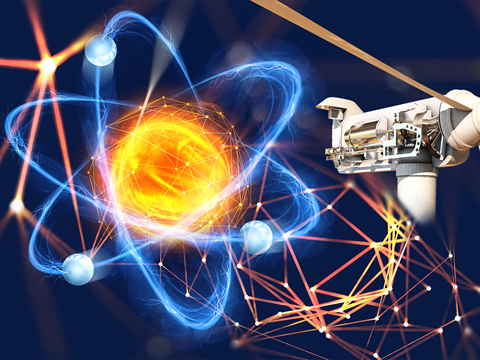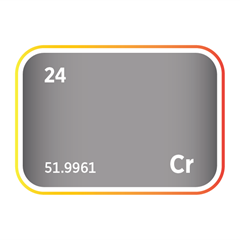Electric Vehicles
Critical minerals, policy, and the energy transition
Critical Minerals Powering Electric Vehicles
The shift towards electric vehicles (EVs) is crucial for reducing carbon emissions and achieving sustainability. Central to this transition is the use of critical minerals that power EVs, enhance their efficiency, and ensure their reliability. However, reliance on these minerals introduces supply chain risks and geopolitical challenges. The diverse range of commodities used in an electric vehicle, spanning elements across the periodic table highlights the intricate and multifaceted nature of modern automotive technology. Resource scarcity and concentration in limited areas, such as cobalt from the DRC, can lead to supply disruptions and price volatility. Environmental and ethical concerns, including poor labour conditions and ecological impacts from mining, further complicate the supply chain. Countries rich in critical minerals, like China with its control over rare earth elements, can leverage their resources for strategic advantage, impacting global markets and trade policies. Diversifying supply sources, technological innovation and international collaboration are essential to mitigate these risks. Expanding exploration, developing recycling technologies, and investing in alternative materials can reduce reliance on specific countries and minerals. International cooperation on standards, regulations, and trade agreements can ensure a stable supply chain, promoting ethical sourcing and environmental sustainability. Western markets are addressing these challenges through strategic planning and collaboration can secure a sustainable future for the EV industry. Discover how critical minerals are intricately used throughout the car to appreciate their indispensable role in advancing electric vehicle technology.
Key Minerals and their Roles
Vehicle body
Steel strengthening
Vanadium, Manganese, Iron, and Molybdenum are used to increase steel's strength, toughness, and wear resistance. Vanadium increases the strength and toughness of steel, making vehicle bodies more durable and resistant to wear and tear. This leads to longer-lasting vehicles with improved safety features. Manganese enhances steel's strength, toughness, and wear resistance, contributing to a more robust vehicle structure. Iron is the primary steel component, providing the necessary structural integrity and strength for the vehicle body. Molybdenum adds strength, hardness, and corrosion resistance to steel, improving the vehicle's durability and lifespan.
Weight reduction
Aluminium and Magnesium are lightweight yet strong metals that significantly reduce vehicle weight, enhancing fuel efficiency and extending battery range in electric vehicles. Aluminium reduces overall weight, while Magnesium, one of the lightest structural metals, further improves energy efficiency and performance.
Suspension system
Tin, Tantalum, Tungsten, and Gold are used in the suspension system for their properties such as low friction, wear resistance, corrosion resistance, and high strength. These minerals improve the suspension components’ efficiency, durability, and reliability. Tin is used in bearings and bushings, providing low friction and wear resistance and enhancing the suspension system’s efficiency and longevity. Tantalum's excellent corrosion resistance makes it valuable for components in the suspension system that must withstand harsh conditions. Tungsten's high density and strength benefit components that require durability and stability under high stress. Gold is used in electrical contacts within the suspension system, ensuring reliable and efficient conductivity.
Exterior components
Glass and mirror polishing
Cerium oxide is used for polishing glass and mirrors, providing a smooth, clear finish essential for visibility and safety.
UV cut glass
Cerium additives in glass help filter out UV radiation, protecting the vehicle's interior and passengers from harmful UV rays.
Headlight glass
Neodymium-doped glass enhances the clarity and brightness of headlights, improving nighttime visibility and safety.
Lighting system
Copper, Silver, and Gold are essential for the lighting system. Due to its excellent conductivity, copper is essential for electrical wiring and lighting system components. Silver provides superior conductivity and is used in high-performance lighting components. Gold ensures reliable and efficient electrical connections, especially in high-stress environments.
Body and Doors
Wiring through the vehicle
Copper is widely used for wiring due to its high electrical conductivity and reliability.
Interior components
LCD display
Copper, Yttrium, Silver, Cerium, and Gold are used in LCD displays. Copper is used in the electrical connections and circuits of LCD displays. Yttrium is used in phosphors for colour displays. Silver's excellent conductivity is crucial for display performance. Cerium is used in the production of glass and display components. Gold ensures reliable connections and performance in LCD displays.
Audio system
Copper, Silver, and Gold ensure high-quality audio signal transmission, clarity, and reliable connections in audio systems. Copper wiring ensures high-quality audio signal transmission. Silver enhances audio signal clarity and performance, and Gold provides reliable and corrosion-resistant connections.
GPS module
Copper, Silver, and Gold are essential for electrical connections and performance in GPS modules, ensuring reliability and accuracy. Copper is essential for electrical connections in GPS modules. Silver improves the performance of GPS components. Gold ensures reliable and durable connections in GPS systems.
Component sensors
Yttrium is used in sensors for its stability and performance characteristics, ensuring reliable and accurate sensing capabilities.
Controls and safety
Airbag
Cobalt is used in the battery of the airbag deployment system, ensuring reliability and rapid response.
Vehicle controls system
Copper wiring is essential in vehicle control systems connecting various critical components to ensure proper functionality. These systems include:
-
Engine Control Unit (ECU): Copper wiring connects sensors and actuators to the ECU, enabling precise engine performance and efficiency control.
-
Transmission Control Unit (TCU): Copper wiring links the TCU to the transmission system, facilitating smooth gear shifts and overall transmission performance.
-
Anti-lock Braking System (ABS): Copper wiring connects wheel speed sensors, the ABS control module, and the braking actuators, ensuring optimal braking performance and safety.
-
Electronic Stability Control (ESC): Copper wiring connects sensors and actuators to the ESC system, helping maintain vehicle stability and control during various driving conditions.
-
Airbag System: Copper wiring connects crash sensors, the airbag control unit, and the airbag deployment mechanisms, ensuring timely and reliable airbag activation during collisions.
-
Infotainment System: Copper wiring connects the central infotainment unit with displays, speakers, and control inputs, providing seamless entertainment and information access.
-
Climate Control System: Copper wiring connects temperature sensors, control units, and actuators to manage the vehicle's heating, ventilation, and air conditioning (HVAC) system.
-
Advanced Driver Assistance Systems (ADAS): Copper wiring links cameras, radar sensors, control units, and display systems, enabling features such as adaptive cruise control, lane-keeping assist, and automatic emergency braking.
-
Power Distribution System: Copper wiring is used in the power distribution network, connecting the battery, fuse boxes, and various electrical components, ensuring reliable power delivery throughout the vehicle.
Silver provides superior conductivity and reliability, and Gold ensures reliable connections and performance.
Powertrain and Motor
Battery Technologies
Cathode materials
Lithium is crucial for high energy density batteries, providing longer range and efficiency. Cobalt enhances energy density and cycle life, and Nickel contributes to high energy density in battery cathodes. For safety and stability, iron is essential in lithium iron phosphate (LiFePO4) batteries.
Anode materials
Graphite is used as an anode material in lithium-ion batteries and offers high conductivity, enhancing overall battery performance. Silicon anodes can further increase battery capacity and efficiency, making them vital components in modern electric vehicles.
Electrolytes
Fluorine, used in battery electrolytes, enhances stability and performance, ensuring reliable and efficient energy storage.
Structural components
Aluminium is used in battery casings and components for its lightweight and corrosion resistance, while Copper is vital for electrical connections and battery components.
Alternative and large-scale storage
Sodium-ion batteries provide an alternative with abundant resources, and Vanadium is used in redox flow batteries for large-scale energy storage, making them suitable for grid applications.
Alternative and large-scale storage
Sodium-ion batteries provide an alternative with abundant resources, and Vanadium is used in redox flow batteries for large-scale energy storage, making them suitable for grid applications.
High energy density and safety
Zinc-air batteries offer high energy density and safety, further diversifying the range of future battery technologies available for electric vehicles.
Traction Motors
Motor technologies and generator
Copper, Lanthanum, Cerium, Praseodymium, Neodymium, Dysprosium, and Terbium are used in motors and generators to enhance performance, efficiency, and heat resistance. Copper is essential for motor windings and electrical connections.
Neodymium, Praseodymium, Dysprosium, and Terbium are used to create powerful permanent magnets. Magnets in electric motors and generators serve multiple purposes, including creating magnetic fields, enhancing efficiency and performance, improving heat resistance, reducing size and weight, facilitating magnetic induction, and ensuring reliability and longevity. These aspects are crucial for the optimal functioning of high-performance electric motors and generators in electric vehicles.
These magnets generate the essential magnetic fields needed for motor operation. The strength and stability of these magnetic fields directly influence the motor's efficiency and power output.
Using powerful rare-earth magnets like those made from Neodymium allows for constructing smaller, lighter motors without compromising power. It is excellent for electric vehicles, where reducing weight can lead to increased efficiency and longer battery life.
Strong and stable magnetic fields provided by Neodymium magnets are often enhanced with Dysprosium for better heat resistance, ensuring that electric motors operate efficiently. This results in less energy loss and higher overall efficiency, which is crucial for extending the range and performance of electric vehicles. Additionally, the durability and stability of the magnets, enhanced by the addition of elements like Dysprosium and Terbium, contribute to the reliability and longevity of motors and generators to maintain EV performance over time and reduce the need for maintenance and replacements.
Electric motors and generators generate significant amounts of heat during operation. Dysprosium and Terbium are added to Neodymium magnets to improve their heat resistance, ensuring they maintain strength and effectiveness even at high temperatures. This is vital for maintaining consistent motor performance and preventing degradation over time. In generators, magnets play a crucial role in converting mechanical energy into electrical energy through magnetic induction. The rotating magnetic fields interact with coils of copper wire, inducing an electric current. The magnets' quality and composition enhance process efficiency and strength.
Lanthanum and Cerium are used in the composition of certain types of magnets and other motor components to improve the performance characteristics of the motor. These elements contribute to better torque and speed control, making electric motors more responsive and powerful.
Cooling system system
Copper's excellent thermal conductivity makes it ideal for cooling system components.
Sensors and modules
Component sensors
Yttrium is used in sensors for stability and reliability.
Charging infrastructure network
Power grid transmission and distribution
Aluminium and Copper are critical materials used in power grid transmission and distribution, which are essential for supporting the charging infrastructure of EVs. The growing demand for these metals due to the expansion of EV charging infrastructure, renewable energy projects, and other technological advancements may strain supply chains resulting in price volatility and supply shortages, impacting the cost and feasibility of large-scale grid upgrades. Existing power grids may require substantial upgrades to accommodate the increased load from EV charging stations. These complex upgrades require careful planning and coordination to avoid disruptions in power supply.
Aluminium is primarily used in power transmission lines for its lightweight and high conductivity. Its lower density compared to copper allows for longer spans between support structures, reducing the overall cost and complexity of the transmission network. Aluminium's excellent conductivity ensures efficient energy transfer over long distances with minimal energy loss. Additionally, aluminium's resistance to corrosion makes it ideal for outdoor use, where it is exposed to various weather conditions, ensuring the durability and longevity of transmission lines.
Copper is widely used in power distribution networks due to its superior electrical conductivity and reliability. It is crucial for ensuring efficient and stable power delivery to charging stations and other infrastructure components. Copper's high conductivity means that less energy is lost as heat, improving the overall efficiency of the power distribution system. Its mechanical strength and flexibility make installing and maintaining easier, especially in complex urban environments. Copper's durability and resistance to corrosion further enhance its suitability for long-term use in power grids.


Power grid transformers
Copper plays an essential role in the operation of power grid transformers. Transformers are critical components in the electrical grid, used to step up (increase) or step down (decrease) voltage levels to ensure efficient power transmission and distribution.
Copper is used for transformer windings due to its high electrical conductivity, which allows for efficient energy transfer with minimal losses. The windings are coils of copper wire that create magnetic fields when electrical current passes through them, enabling the voltage transformation process. Copper's excellent thermal conductivity also helps dissipate heat generated during operation, preventing overheating and ensuring the transformer’s reliability and longevity. Furthermore, copper's mechanical properties, such as its strength and ductility, make it an ideal material for withstanding the physical stresses encountered during the transformer's operation and installation.
The durability of copper reduces the frequency of maintenance and replacement of transformer components, ensuring a stable and reliable power supply. This is particularly important for the charging infrastructure of electric vehicles, where consistent and uninterrupted power is crucial for effective and efficient charging.


Meet the Critical Minerals team
Trusted advice from a dedicated team of experts.

Henk de Hoop
Chief Executive Officer

Beresford Clarke
Managing Director: Technical & Research

Jamie Underwood
Principal Consultant

Ismet Soyocak
ESG & Critical Minerals Lead

Rj Coetzee
Senior Market Analyst: Battery Materials and Technologies

How can we help you?
SFA (Oxford) provides bespoke, independent intelligence on the strategic metal markets, specifically tailored to your needs. To find out more about what we can offer you, please contact us.




























